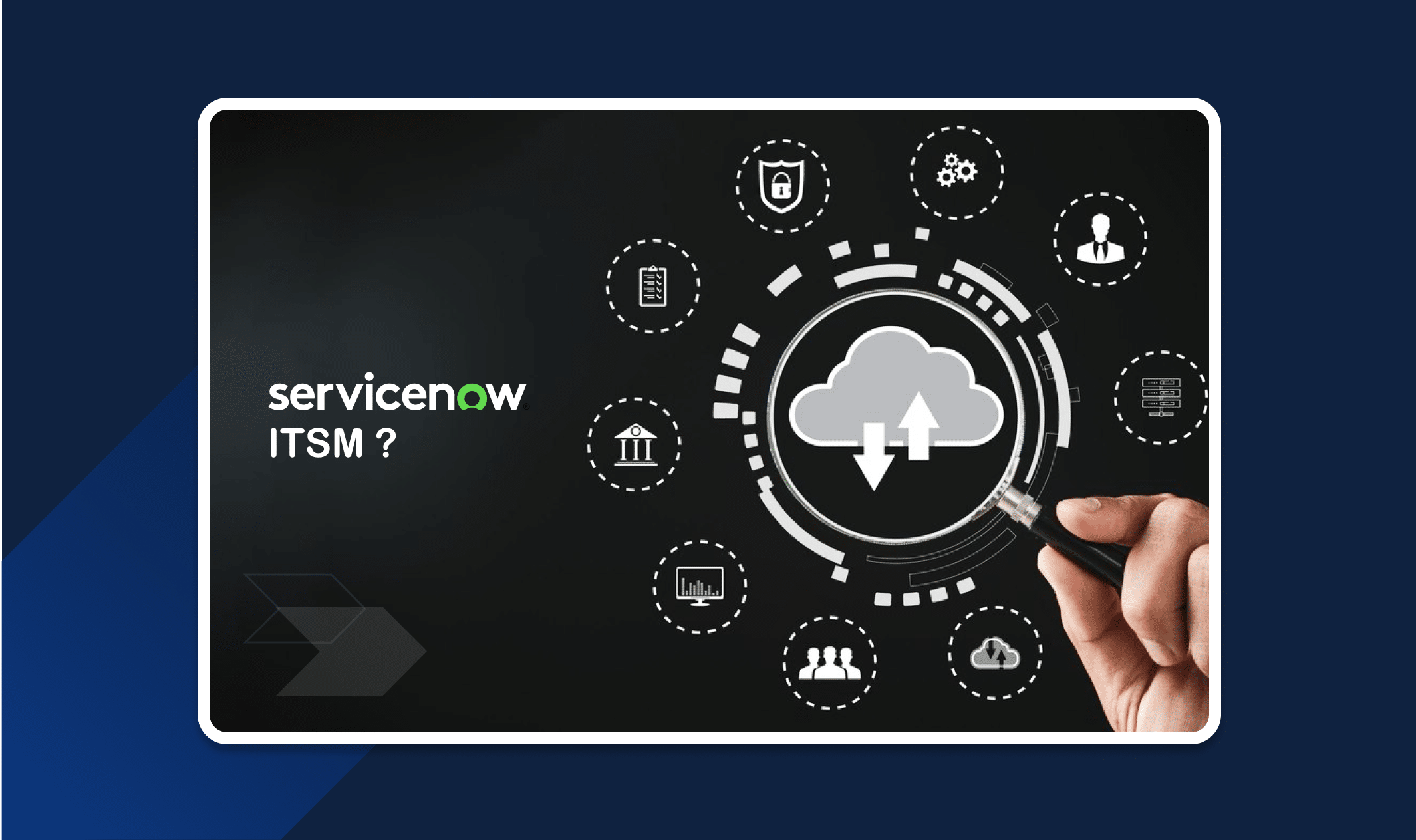
In the fast-paced digital age, organizations face constant pressure to enhance operational efficiency, improve customer and employee satisfaction, and remain competitive. ServiceNow, a robust cloud-based platform, has emerged as a transformative solution, offering a suite of services that revolutionize how businesses operate. In this blog, we delve into the benefits of ServiceNow and explore how it empowers modern businesses to achieve their goals.
1. Streamlined Workflow Management
One of the key strengths of ServiceNow is that it can smooth out workflows throughout an organization. It integrates disparate systems and automates repetitive tasks, enabling smoother communication and coordination between departments. Whether it’s IT, HR, or customer service, ServiceNow ensures that workflows are unified and efficient, eliminating silos that hinder productivity.
For example, in ServiceNow, automatic ticketing helps minimize response time, ensure good service delivery by immediately sending the issue to the concerned team, and thus help companies save thousands of hours that would otherwise be spent on manual processes, allowing teams to focus on strategic initiatives.
2. Improved Employee Experience
The success of any business is basically centered on employee productivity and satisfaction. ServiceNow offers easy-to-use self-service portals where employees can find answers to simple questions, such as how to reset a password or where to locate the company’s HR policies.
With mobile-friendly interfaces and AI-driven solutions, ServiceNow reduces workplace disruptions and enhances the overall employee experience. By addressing issues proactively, businesses promote a culture of innovation and collaboration.
3. Improved Customer Satisfaction
In a customer-centric world, businesses have to deliver personalized and responsive services. ServiceNow’s Customer Service Management (CSM) platform helps organizations in responding effectively to customer needs.
With the consolidation of customer interactions into one platform, ServiceNow allows agents to gain an integrated view of the customer history, thus leading to quick resolution of the issues and an experience that is consistent and high quality, therefore improving customer loyalty and brand reputation.
4. Data-Driven Insights for Better Decision-Making
Data is the backbone of a modern business strategy, and ServiceNow provides organizations with some of the most advanced analytics and reporting tools. These features allow businesses to track KPIs and monitor trends to find where they can improve.
ServiceNow’s predictive analytics capabilities enable decision-makers to predict outcomes and develop proactive strategies. For example, businesses can predict IT incidents before they escalate to ensure minimum downtime and a smooth service flow.
5. Scalability and Adaptability
As businesses grow, their needs evolve. ServiceNow’s modular architecture allows organizations to scale effortlessly by adding functionalities as needed. From IT service management (ITSM) to enterprise resource planning (ERP), ServiceNow offers flexible solutions tailored to meet unique business requirements.
This adaptability ensures that organizations can remain agile, responding to market changes and customer demands without overhauling their existing systems.
6. Enhanced Security and Compliance
Modern businesses face increasing security challenges, and ServiceNow provides a robust framework to mitigate risks. With advanced encryption, access controls, and compliance monitoring, businesses can protect sensitive data while adhering to regulatory requirements.
ServiceNow also offers automated audits and policy enforcement tools, ensuring that organizations maintain transparency and accountability in their operations.
7. Cost Savings Through Automation
ServiceNow helps businesses in reducing operational costs by automating mundane tasks and optimizing the allocation of resources. Inefficiencies are identified along with suggestions for improvement for maximum ROI.
For example, automating IT service management reduces the need for extensive manual intervention, saving time and labor costs. These savings can be reinvested into innovation and growth.
8. Seamless Integration with Existing Systems
ServiceNow is versatile in the manner it accommodates other tools and software without causing disruptions in its initial implementation, thereby ensuring a seamless transition for employees.
By connecting with popular tools such as Salesforce, Microsoft Office, and Slack, ServiceNow becomes an integral part of the organizational ecosystem, enhancing collaboration and efficiency.
9. Continuous Innovation with AI and Machine Learning
ServiceNow leverages artificial intelligence (AI) and machine learning (ML) to drive innovation. These technologies power intelligent automation, predictive analytics, and chatbots, enabling organizations to stay ahead of the competition.
For instance, AI-powered virtual agents in ServiceNow can resolve common customer queries autonomously, reducing response times and freeing up human agents for complex tasks.
10. Accelerated Digital Transformation
In an era where digital transformation is no longer optional, ServiceNow serves as a catalyst for change. By digitizing workflows and enabling automation, it helps businesses transition from traditional methods to modern, efficient processes.
Organizations leveraging ServiceNow experience faster time-to-market for new products and services, giving them a competitive edge.
Why Modern Businesses Need ServiceNow
The benefits of ServiceNow extend beyond operational efficiency to drive holistic business success. By unifying processes, enhancing collaboration, and leveraging cutting-edge technology, ServiceNow empowers organizations to achieve sustainable growth.
From cutting cost to innovation, ServiceNow is the game changer for any modern business aiming to keep ahead in the very fast-evolving landscape. Be it about customer experiences, boosting the productivity of employees, or finding data-driven insights, ServiceNow is the perfect platform for it.
Some Sectors That Can Benefit from ServiceNow
ServiceNow’s versatility makes it an invaluable tool across various industries. Here are some key sectors that can leverage its potential:
- Healthcare: Streamline patient management, optimize HR processes, and enhance IT infrastructure for better service delivery.
- Finance: Improve customer service workflows, ensure compliance, and enhance security protocols.
- Retail: Automate inventory management, improve customer support, and optimize supply chain operations.
- Education: Simplify administrative tasks, enhance IT support, and provide seamless student services.
- Manufacturing: Enable predictive maintenance, manage workflows efficiently, and optimize production lines.
ServiceNow provides tailored solutions to address the unique challenges faced by each sector, driving operational excellence.
Ready to unlock the power of ServiceNow for your business? At Amazatic, we specialize in End-to-End ServiceNow implementation, ensuring you unlock its full potential tailored to your needs. Contact us today at contact@amazatic.com








